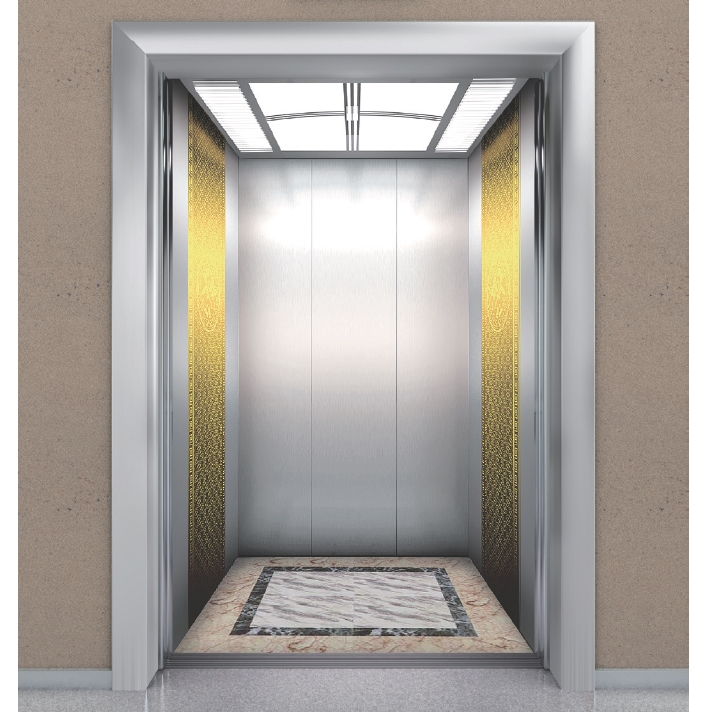What are the specs of a fuji passenger elevator?
The specifications of a passenger elevator can vary depending on the manufacturer and model, but here are some common specifications:
1. Capacity: Passenger elevators typically have a capacity ranging from 1,000 to 5,000 pounds, or 5 to 25 passengers.
2. Speed: The speed of a passenger elevator can range from 200 feet per minute (fpm) to 500 fpm, or even higher for high-rise buildings.
3. Size: The size of a passenger elevator can vary, but a standard size might be around 6 feet wide by 7 feet deep.
4. Door type: Passenger elevators can have single or double doors, with various opening mechanisms such as sliding, telescopic, or center opening doors.
5. Safety features: Passenger elevators are equipped with various safety features such as emergency brakes, door interlocks, and emergency communication systems.
6. Control system: Modern passenger elevators often use advanced control systems for smooth and efficient operation, including destination dispatch systems for optimizing traffic flow.


What is the standard for passenger lift?
The standard for passenger lifts, also known as elevators, can vary depending on the region and local building codes and regulations. However, there are some common standards and guidelines that are often followed in the design, installation, and operation of passenger lifts. These standards may include:
1. Safety codes: Passenger lifts are typically required to adhere to safety codes and standards set by organizations such as the American Society of Mechanical Engineers (ASME) or the International Organization for Standardization (ISO). These codes cover various aspects of elevator design, construction, and maintenance to ensure the safety of passengers and the proper functioning of the elevator system.
2. Accessibility standards: In many jurisdictions, passenger lifts are required to comply with accessibility standards to ensure that they are usable by individuals with disabilities. This may include features such as Braille signage, audible announcements, and controls at accessible heights.
3. Load and capacity requirements: Standards for passenger lifts often specify load and capacity requirements to ensure that the elevator can safely carry its intended load, including passengers and their belongings.
4. Maintenance and inspection guidelines: Standards may also include requirements for regular maintenance and inspection of passenger lifts to ensure their safe and reliable operation over time.
How do you calculate passenger lift capacity?
Calculation of passenger elevator capacity is usually based on the following factors:
1. Weight per person: The average weight per person is often used as the basis for calculating the carrying capacity. This may vary by region and is usually determined by building codes or regulations.
2. Available space: The size and dimensions of the elevator car also affect its capacity. Larger cars can accommodate more passengers, while smaller cars can accommodate fewer passengers.
3. Safety Factor: Elevator manufacturers and building codes often include safety factors in capacity calculations to ensure that the elevator can safely carry its maximum load.
To calculate passenger elevator capacity, you can use the following formula:
Capacity = (weight per person) x (number of people) x (safety factor)
How much weight can a passenger elevator hold?
The weight capacity of a passenger elevator can vary depending on its size, design, and specifications. However, a typical passenger elevator can hold anywhere from 1,000 pounds to 5,000 pounds, or even more in some cases. This weight capacity is designed to accommodate a certain number of passengers along with their belongings while ensuring safe and efficient operation.
It's important to note that the weight capacity of a passenger elevator should always be adhered to in order to maintain safety and prevent overloading. Exceeding the specified weight limit can lead to potential hazards and may cause damage to the elevator system.
For specific weight capacity information, it's best to refer to the elevator manufacturer's specifications or consult with a qualified professional who can provide accurate details based on the specific elevator model and installation.
Post time: Jul-25-2024
